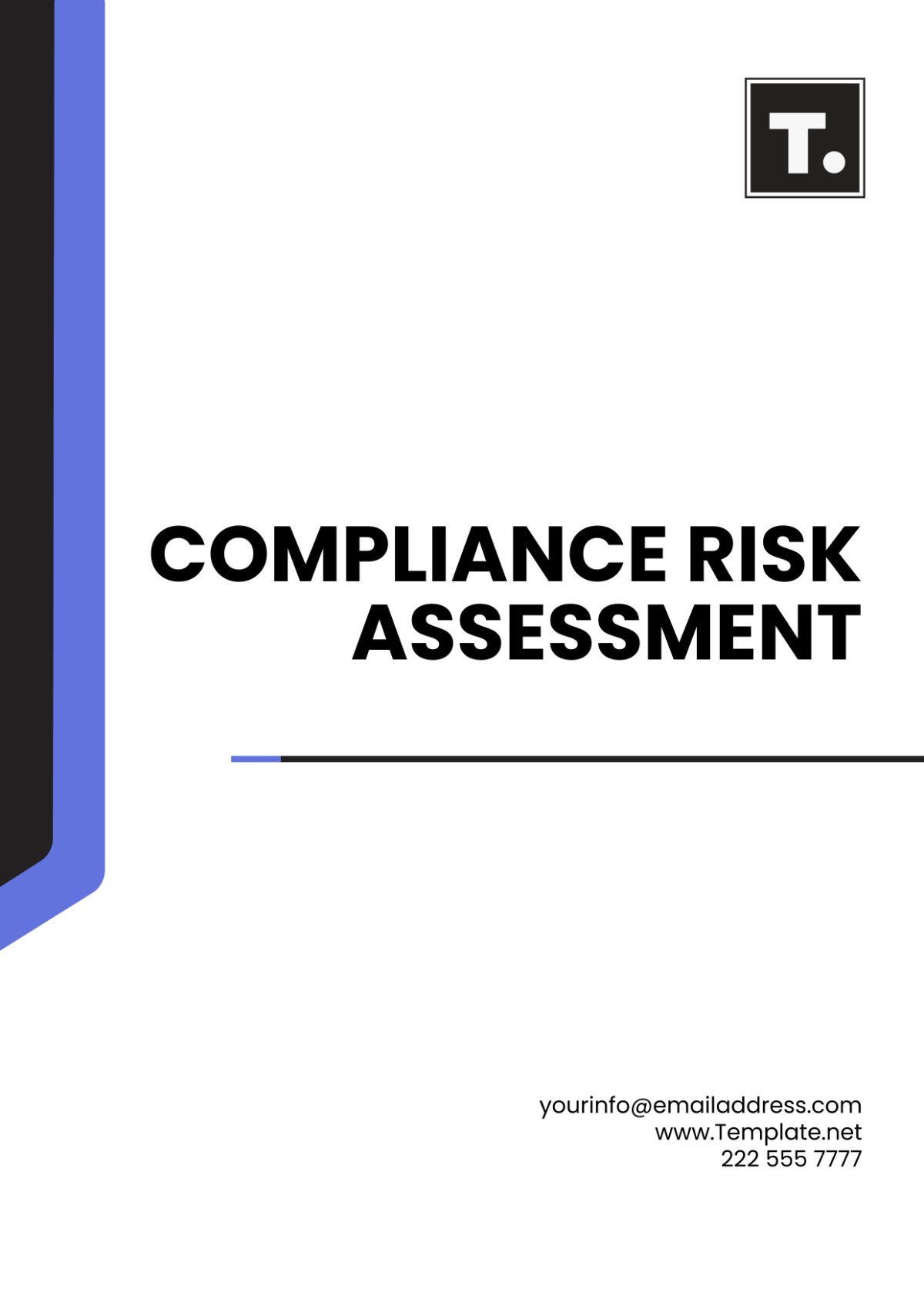Free Compliance Risk Assessment

Date: January 15, 2050
Prepared by: [Your Name]
Email: [Your Email]
I. Executive Summary
This Compliance Risk Assessment aims to identify and evaluate potential compliance risks within [Your Company Name]. The assessment provides insights into the regulatory landscape, identifies specific areas of concern, and recommends actionable strategies for mitigating compliance risks.
II. Compliance Risk Identification
The following table outlines key compliance risks identified across different departments within [Your Company Name]:
Department | Compliance Area | Identified Risks |
|---|---|---|
Finance | Financial Regulations | Non-compliance with the Sarbanes-Oxley Act |
Human Resources | Labor Laws | Violations of Equal Employment Opportunity regulations |
Operations | Environmental Regulations | Non-compliance with EPA standards |
IT | Data Protection | Breaches of GDPR and CCPA regulations |
III. Risk Analysis
A. Financial Regulations
Non-compliance with financial regulations can lead to severe penalties and damage to reputation. The finance department must ensure robust controls to monitor compliance with the Sarbanes-Oxley Act and maintain accurate financial reporting.
B. Labor Laws
The HR department must rigorously enforce labor laws to avoid potential lawsuits and penalties. Training and awareness programs should be implemented to ensure all employees understand their rights and responsibilities under labor laws.
C. Environmental Regulations
The operations team must regularly review and assess compliance with environmental regulations set by the EPA. Failure to comply can result in significant fines and operational shutdowns.
D. Data Protection
In the IT department, it is crucial to comply with data protection regulations such as GDPR and CCPA. Non-compliance can lead to substantial fines and loss of customer trust
.
IV. Mitigation Strategies
Risk Area | Mitigation Strategies |
|---|---|
Financial Regulations | Conduct regular audits and ensure accurate reporting |
Labor Laws | Implement training programs and regular policy reviews |
Environmental Regulations | Schedule audits and ensure all operations are compliant |
Data Protection | Regularly update data protection policies and conduct training |
V. Recommendations
Establish a Compliance Committee: Create a dedicated team responsible for overseeing compliance efforts across the organization.
Regular Training: Implement mandatory training programs for all employees on compliance-related topics relevant to their roles.
Compliance Audits: Schedule regular compliance audits to identify areas of risk and ensure adherence to regulations.
Develop a Reporting Mechanism: Create a system for employees to report compliance concerns anonymously.
VI. Conclusion
This Compliance Risk Assessment highlights the critical areas of compliance risk within [Your Company Name]. By implementing the recommended strategies, the organization can significantly mitigate compliance risks and foster a culture of compliance throughout the organization.
- 100% Customizable, free editor
- Access 1 Million+ Templates, photo’s & graphics
- Download or share as a template
- Click and replace photos, graphics, text, backgrounds
- Resize, crop, AI write & more
- Access advanced editor
Enhance and Discover the ultimate solution for comprehensive compliance risk assessment with Template.net's Compliance Risk Assessment Template. This meticulously crafted resource offers unparalleled ease with its editable and customizable features, ensuring tailored assessments to suit your needs. Effortlessly edit in our Ai Editor Tool, streamlining your risk management process like never before.





























